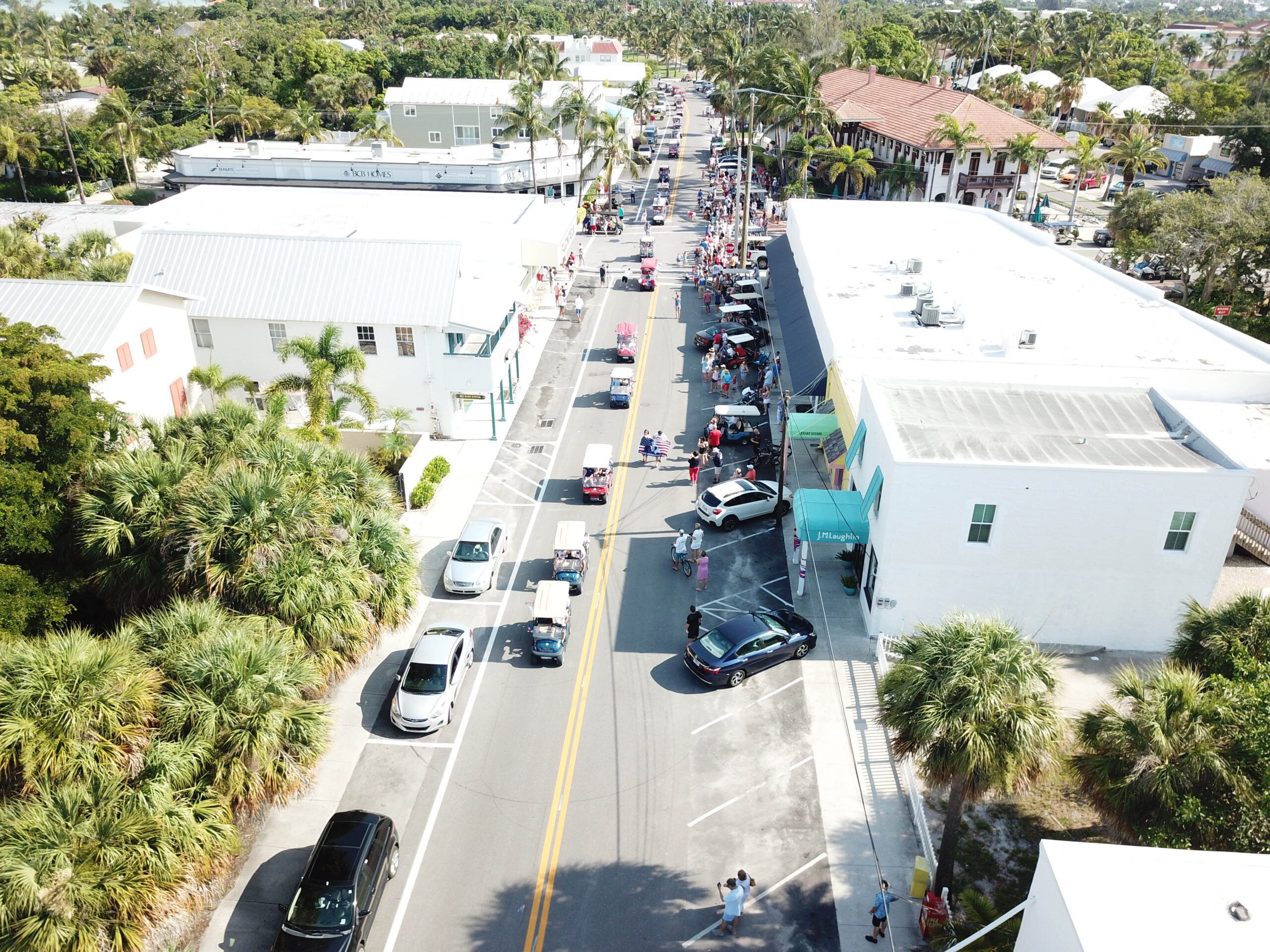If island retail is important, let’s start with an inventory

Currently, the Boca Beacon is digesting hundreds of pages of correspondence between Lee County and Boca Grande as part of a public records request. On June 4, we filed and paid for a record of any recent email or text correspondence that contain the keywords “Boca Grande” or “Gasparilla Island” between all county commissioners, county managers and residents.
We received copies of those emails and texts Tuesday and will begin to analyze and release the details of them in upcoming editions. Looking through them all, and seeing facts, will help us step back from the situation, and sort through what is happening to us as we send our entreaties to Fort Myers for them to “fix” things.
The reason the issue is a challenge is that in planning decision after planning decision on Gasparilla Island, we have relied on the utility of on-street parking. This has been a boon to this town, as there are no ugly gaps in the streetscape for parking. Most American towns have “missing teeth” along their streets. We do not. That is good.
But it poses a challenge. Our large hotel has no large parking lot, a challenge that only big city hotels face. Our Gilchrist churches do not have parking lots at all. For instance, the Methodist Church has perhaps three spaces, the Episcopal Church perhaps two, depending on car size, or golf cart. The Baptist Church has a few in the back. De minimis, as the lawyer says. Even our grocery, Hudson’s, has no parking. The only other grocery stores without parking that we can think of are in big cities. Think Gristedes on the Upper East Side.
This will be an even bigger issue over the next two years, as we will have two major construction projects in the middle of town, the Boca Grande Health Clinic, and the Boca Grande Community Center. These projects will need dozens of contractors and sub-contractors, all with pickups, who all need to park or get lunch or coffee. We have heard of contractors calling around for spaces.
How many spaces are there? And is a space on the periphery of town a space, or not? The idea today is that you want to get away from too many off-street parking lots. Good on us. But that has meant that we all must share parking, with informal rules.
Because we have a main concern with the health of our retailers, we need to start, like the seller, with an inventory of what we have. What do we have to sell, if an outside parking vendor comes in to start charging? (That is being discussed.)
For instance, the lot at 5th Street, which is temporarily closed (until beach renourishment) to beach access, is a key to many discussions. Most believe that there are supposed to be 91 spaces there. But last month, as part of a journalism project, we had our summer intern Evan Dunbar go over and check. Twice. He published a parking list online, our first attempt at an island-wide inventory. There are actually less than 80 spaces, 75 regular, and four handicapped.
(Evan is heading to the University of Missouri journalism school in August. We trust this assignment will serve to establish the glamor and excitement of the journalism trade.)
What constitutes the number of spaces elsewhere? Part of the delight, and the environmental benefit of Boca Grande, is that our parking is almost all permeable; it is crushed shell, on sand. This is a unique feature here. It allows for rainwater to go quickly into the sand, and not run off. If the spots were paved, and divided, this unique visual element would be lost. But it also means that the number of parking spots depends upon the size of the cars.
Some other side street beach parking numbers include Fourth Street with less than 20; Third Street less than 20 spaces, Banyan Street less than 25 spaces and First Street less than 20 spaces. And what of the blocked spaces near downtown, where residents have put planters out in the public right of way, to keep people from parking near their house? Do those count? Do we get them back? And how?
So many questions.
Garland Pollard is editor of the Beacon. Email letters and comments to editor@bocabeacon.com.








